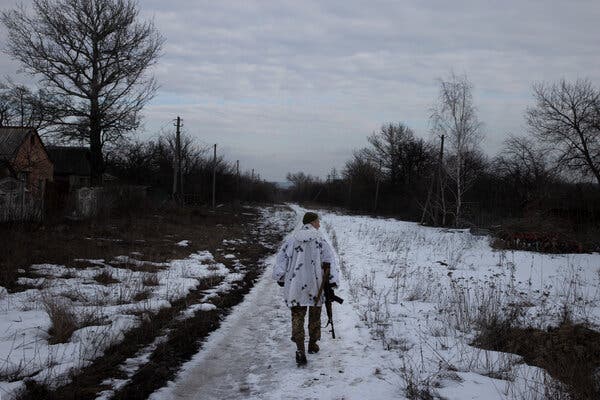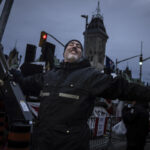
KYIV, Ukraine — Since late fall, the number of troops that Russia has dispatched to the borders near Ukraine has been growing. In the first week of January, the United States estimated that they numbered around 100,000. That figure grew to 130,000, and then, on Tuesday, President Biden put the number at 150,000 — with brigades normally based as far away as Siberia joining the force.
Now, even as Russia continues to issue statements saying it is starting to draw down troops, the Pentagon says that another 7,000 soldiers have just joined the ranks near Ukraine and are poised to launch an attack at any moment.
On Wednesday, a senior American official, who refused to be quoted by name, told reporters that far from winding down its deployment, Moscow was adding combatants. Western allies expressed similar rejections of the Russian claims.
The American official directly accused Russia of lying, saying there was new evidence it was mobilizing for war.
On Thursday, the Russian Defense Ministry issued its most detailed announcements so far in claiming that Russian troops are withdrawing to their permanent bases after conducting military exercises. The ministry’s spokesman, Gen. Igor Konashenkov, said that logistics units of the western military district had traveled more than 400 miles from the Kursk region, bordering Ukraine, and returned to their base in the town of Dzerzhinsk in central Russia.
Several other military groups traveled more than 900 miles by railway with their equipment and were redeployed to Chechnya and Dagestan, he said. The troops currently engaged in military exercises in Belarus will also return to their home bases once the drills are over, Gen. Konashenkov said in a statement.
Those assurances did little to assuage Western concerns. In a reflection of the urgency of the moment, the 27 leaders of the European Union member states were scheduled to meet on Thursday in Brussels for an extraordinary summit to discuss the crisis.
Separately, Defense Secretary Lloyd J. Austin III is meeting with the head of NATO, Jens Stoltenberg, in Brussels to discuss the allied effort to counter Russia. Mr. Stoltenberg, echoing other Western officials, said he also saw nothing to support Russia’s claim of a drawdown.
“They have enough troops to launch a full-scale invasion,” Mr. Stoltenberg said on Thursday, repeating his assertion that an attack could be carried out with very little warning.

With the West essentially accusing Moscow of lying, the outlines of any diplomatic solution to the crisis once again looked very hard to discern.
And even if Russia decides not to send tanks rolling across the border, the enormous deployment — along with alleged cyberattacks and economic pressure — is doing its own harm to Ukraine.
“It feels like we’re watching a slow-motion train wreck happening before our eyes,” Ben Hodges, the former commander of U.S. Army in Europe, wrote on Twitter. “The currently deployed Russian land and naval forces are like a boa constrictor around Ukraine, choking its economy and further threatening its sovereignty.”
Using the threat to Ukraine as a bargaining chip, President Vladimir V. Putin of Russia has made sweeping demands, including the withdrawal of NATO forces from Eastern European countries that used to be under the yoke of the former Soviet Union. The United States and its NATO allies say that will never happen.
Russia has framed the crisis as revolving around its fundamental security. And it says that even the distant prospect of Ukraine joining NATO represents an existential threat.
President Volodymyr Zelensky of Ukraine made it clear once again that NATO membership is key to his country’s long-term security. “It’s not an ambition. It’s our life,” he said, according to brief comments aired by the BBC.
But the crisis in Ukraine did not begin when Russia issued those demands in December — and it was triggered by security concerns as much as geopolitical ones.
It was in late November 2013 when Ukrainians took to the streets in peaceful protest after Viktor F. Yanukovych, the president at the time, chose not to sign an agreement that would have integrated the country more closely with the European Union.
The protests were brutally repressed, and in the ensuing violence, about 100 civilians — referred to here as the “heavenly hundred” — were killed on Feb. 20 and 21.
Soon after that, Russia annexed Ukraine’s Crimea peninsula and supported a separatist rebellion in the eastern Donbas region that continues to smolder today.




